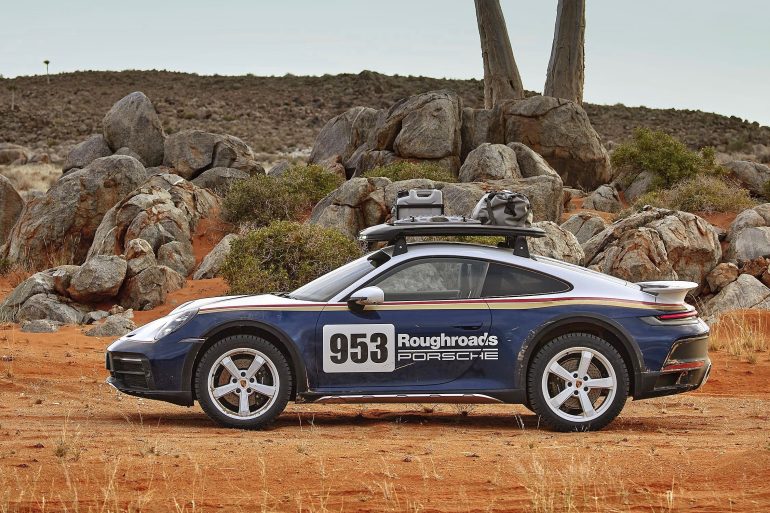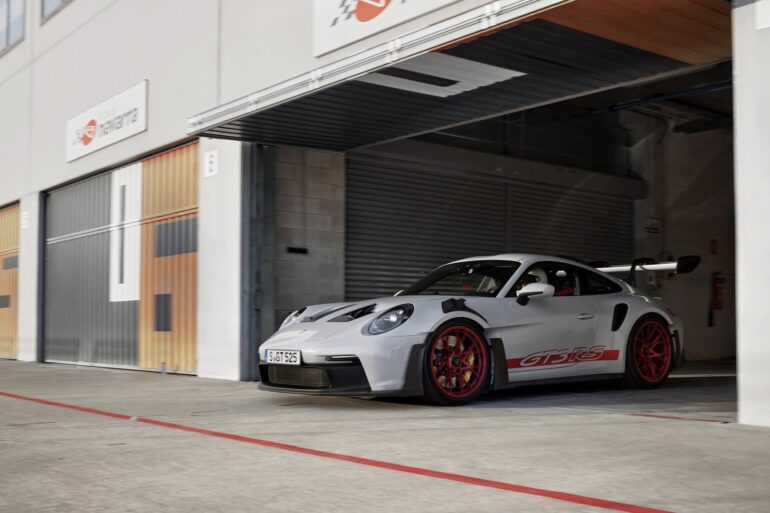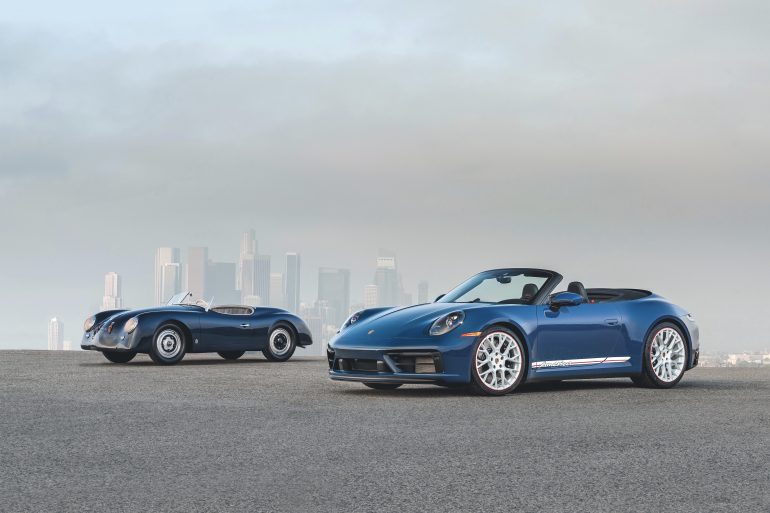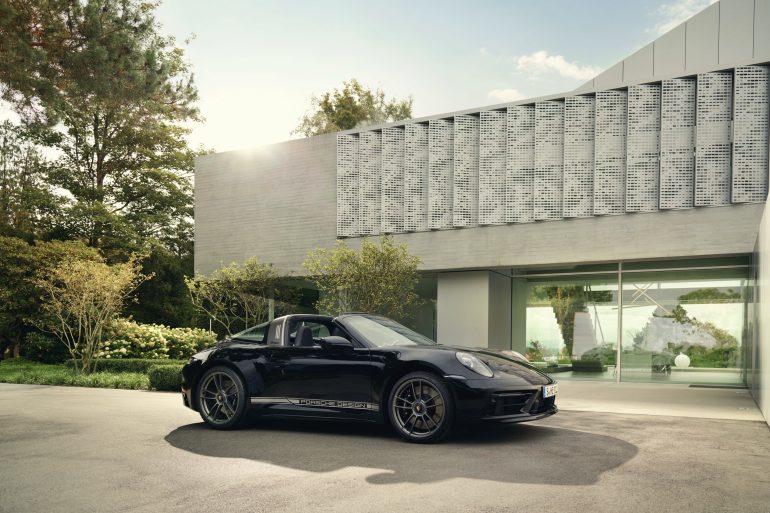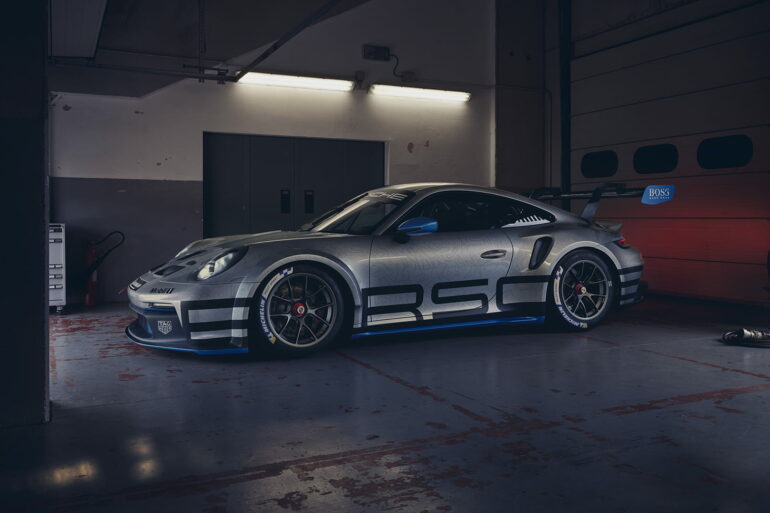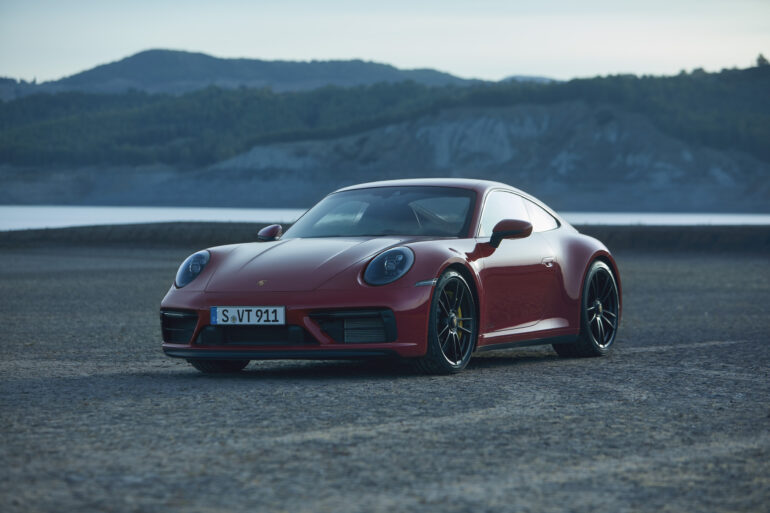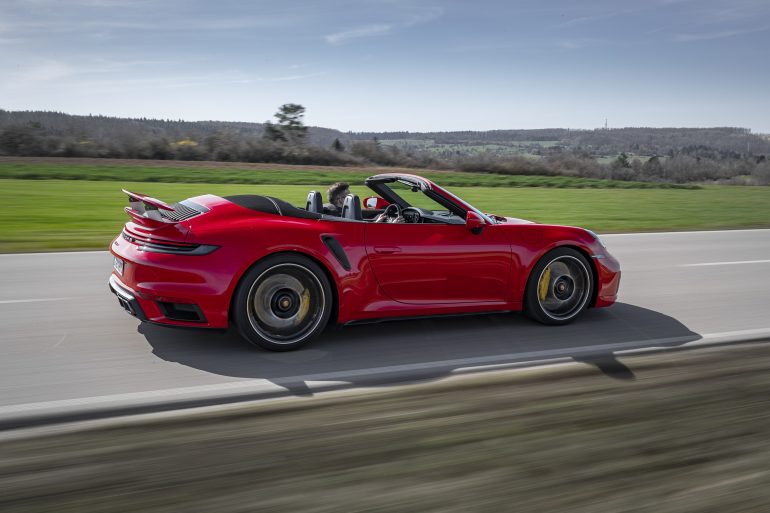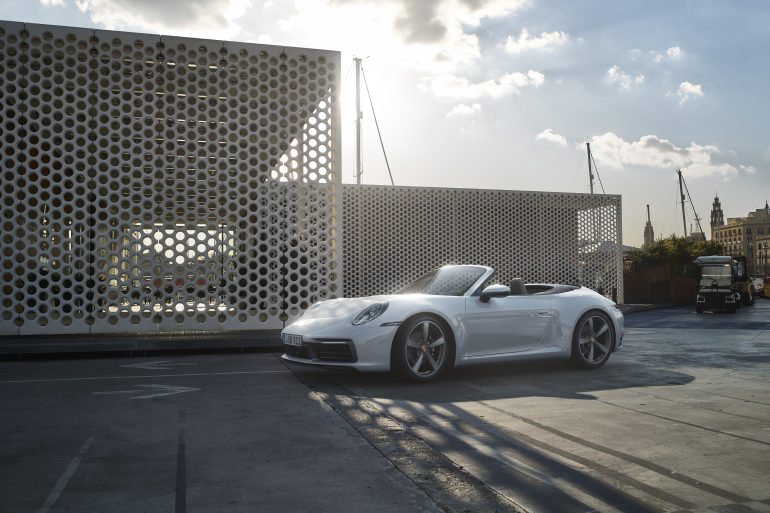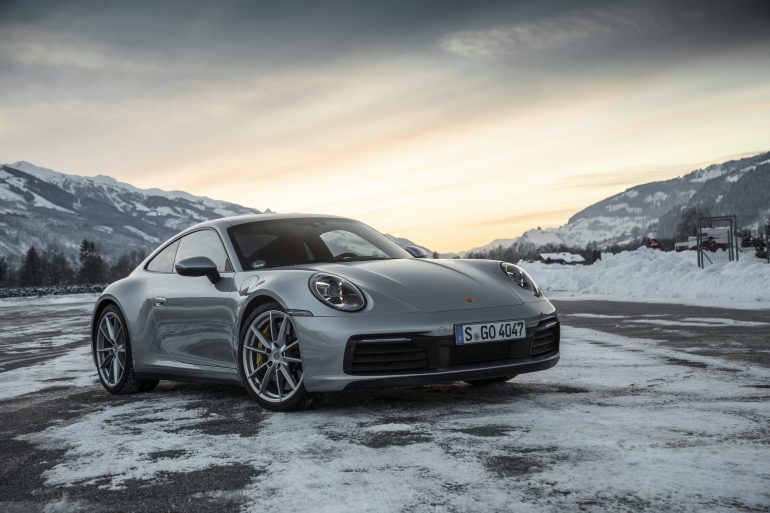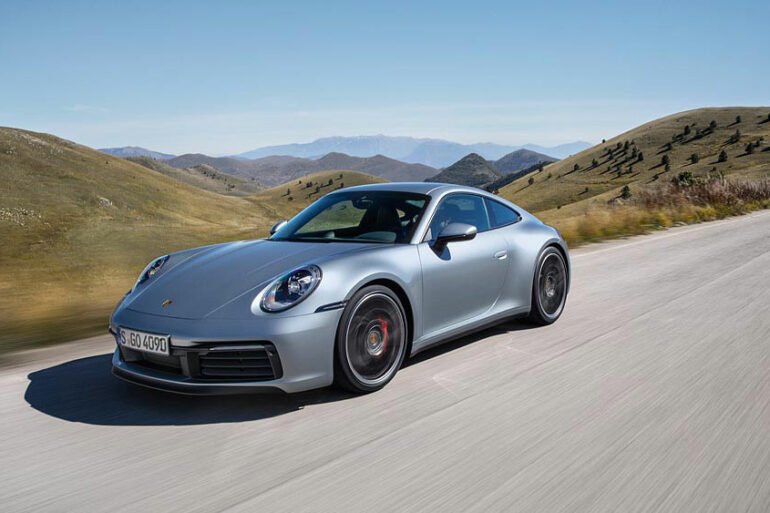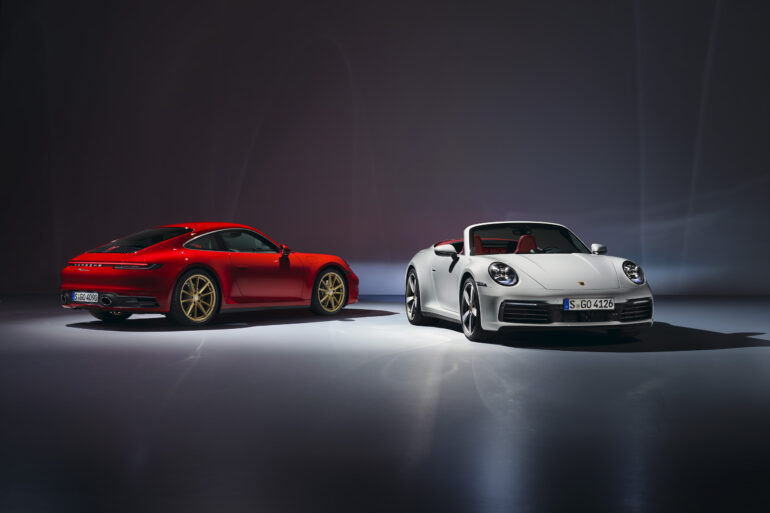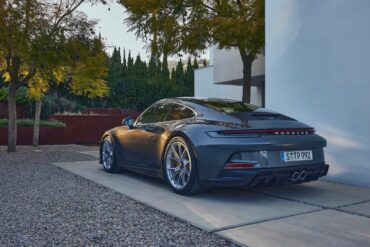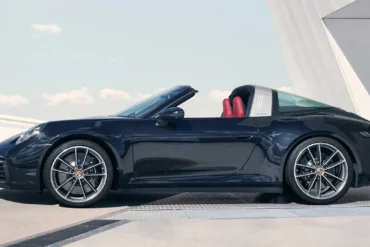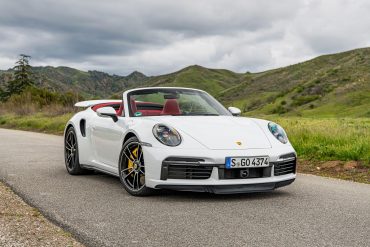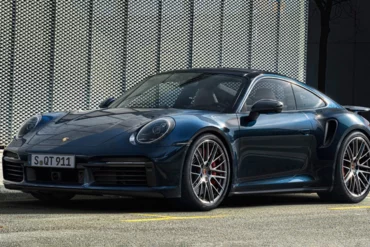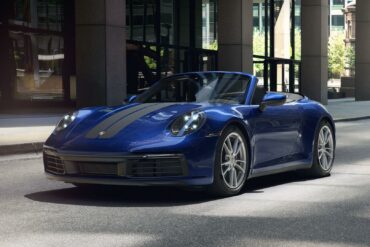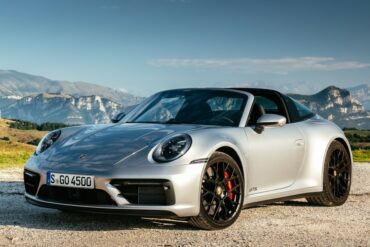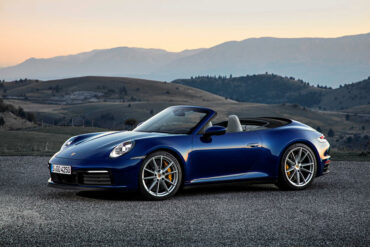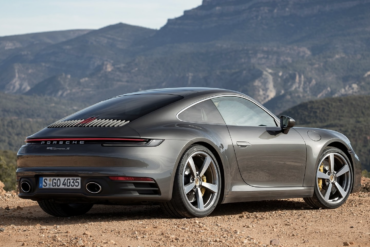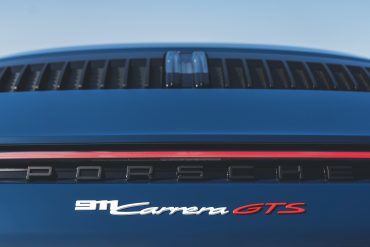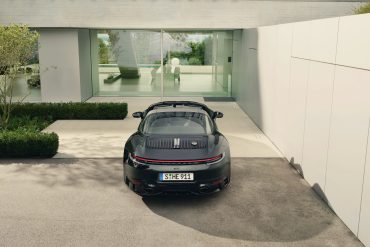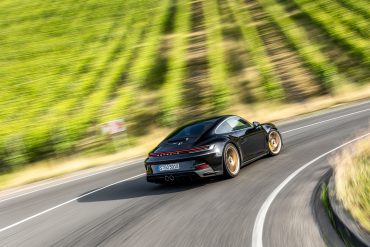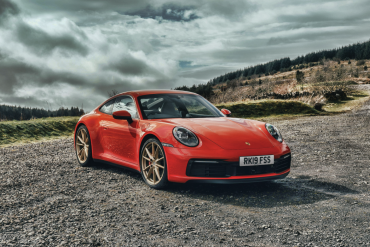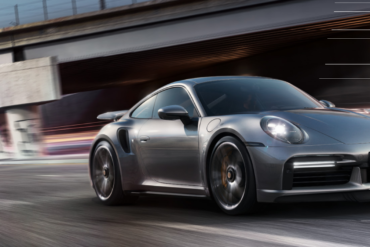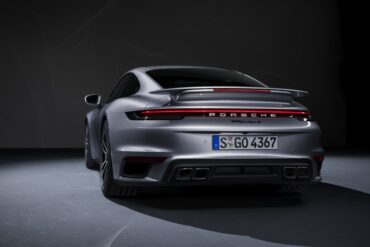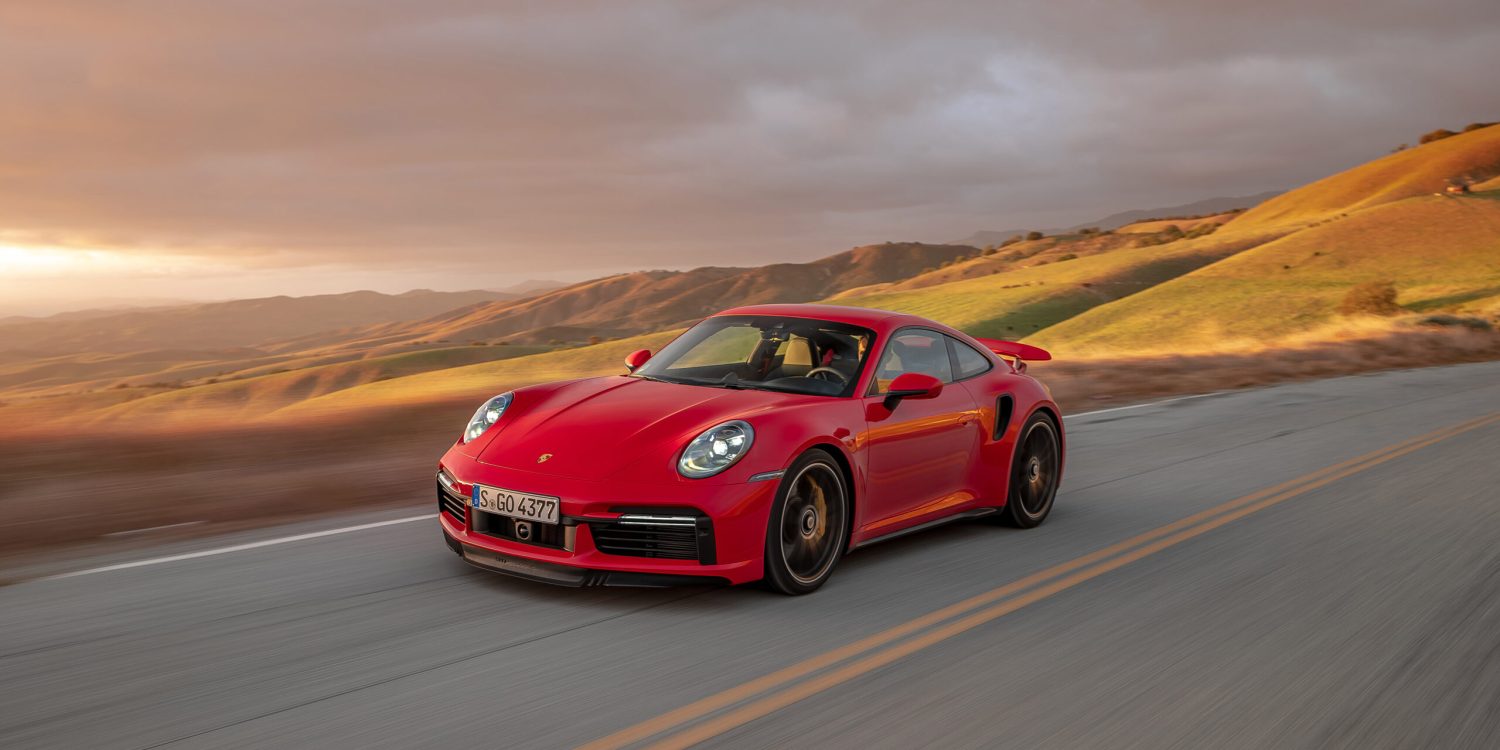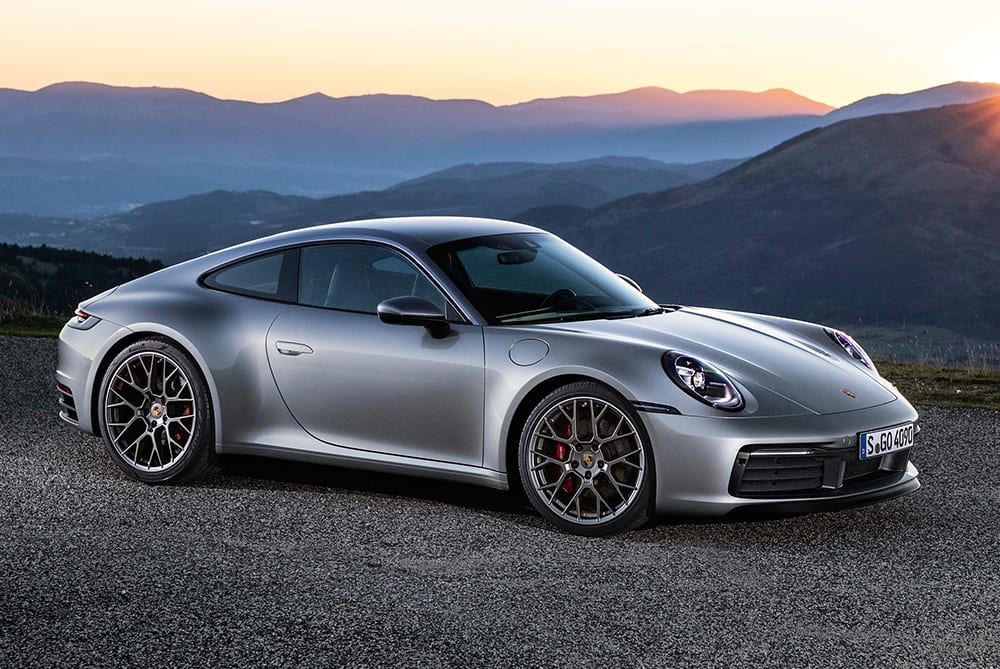Porsche makes sports car history by launching its first publicly available rally car, the $223,450 911 Dakar. After extensive testing, Porsche has settled on a 3.0-liter twin-turbo six-cylinder boxer engine with 473 hp and 420 lb-ft of torque and an 8-speed PDK. True to rally form, an 80-mm suspension lifts the car, along with an optional roof rack and model-specific Pirelli Scorpion all-terrain tires.
2023 Porsche 911
Variants, Reviews, Pricing, and Specs
Prices Starting at $107,550
Overview
"Faster, more emotional, and more connected" is how Porsche described the eighth generation Porsche 911 in their press release on November 27th 2018. The next generation of flat-six turbocharged engines has been further developed to be more powerful than ever. There are numerous revisions and tweaks to the powerful turbocharged engines, the result in Carrera S is horsepower output increasing from 420 to 450 as a result. The 992 engine has the compulsory particulate filter which adds around 10 kg/22 lb. The PDK multi-clutch automatic transmission has 8 speeds. The first gear has a shorter gear ratio than before, which better matches lower gears to the turbocharged engines. Cars with manual transmission come with rear differential lock and Sport Chrono package with automatic rev-match function. The new cabriolet roof hydraulics reduce opening time to around 12 seconds and the new engine mounting position makes the cabriolet torsionally more rigid than its predecessor. This allows - for the first time - to offer PASM Porsche Active Suspension Management sport chassis for the 911 Cabriolet. The interior is completely new, but classic from the first glance.
As expected, Porsche launched the Carrera S and 4S first and then we saw the rest of the lineup trickle in over the following 12 - 18 months. In 2021, we saw the full GTS lineup announced and the 911 GT3 (now with a dedicated GT3 Touring model). In 2023 we see the regular range completed with the purist-focused Carrera T rejoining the lineup with its sweet rear-wheel drive, no rear seats, and a manual gearbox set up for a reasonable $118,050. 2023 also sees the return of the more extreme 911 in the range, the track-focused 911 GT3 RS. It gets a massive rear wing, real hardcore race-car aerodynamic package, and a 518-horsepower version of the naturally aspirated 4.0-liter flat-six engine from the GT3.
Last year we mentioned that we were expecting to see a bunch of new special edition Porsche 911 models for the 2023 model year and Porsche did not lets us down. To celebrate the brand's 70th year selling cars in North America, Porsche create an awesome off-road-oriented Dakar version of the 911. It gets knobby tires, a higher suspension, and the same powertrain as the Carrera 4 GTS. It is limited to just 2,500 examples and the starting price is a steep $223,450. There's also a range-topping America Edition GTS cabriolet that will join the 2023 911 lineup as a limited edition model. It gets a seven-speed manual transmission, Azure Blue 356 exterior paint, tri-finish wheels (with white, silver, and red detailing), and special bodyside graphics. The black leather interior is punctuated with red detailing throughout and illuminated door sill plates pay homage to the brand's North American history, all for "just" $186,370.
Previous Years: 2022 Porsche 911 Lineup
The latest 992-generation is familiar in many respects, and differs from its predecessors in others, but get it on a twisting road or a race track and there’s no doubting its provenance.
EVO.co.uk
Pros
Impressive powertrains; chassis; response and tactility of controls. There is a 911 for every buyer and they're all awesome.
Cons
You need to push it too hard to find the joy. New tech and larger size make them less "fun" than the old days
Verdict
Still the best sports car on the planet (any variant). Luxury car, supercar, track car and everything in between.
What's New for 2023
New to the 911 lineup for 2023 is the return of the extreme 911 GT3 RS. It gets a huge rear wing, race-car aero, a 518-horsepower naturally aspirated 4.0-liter flat-six engine. The GT3 RS is the ultimate track toy. We also see the purist-focused 911 Carrera T back in the regular lineup, with its back to backs approach. Try rear-wheel drive, no rear seats, and a manual gearbox for under US$120k. We also see some new special edition 911s for the 2023 model year. A limited-edition (only 1250 will be made) Sport Classic is new for 2023, combining the classic sport classic design with a 543-hp version of the 911 Turbo’s engine, rear-drive, and the seven-speed manual. The standard Turbo engine was detuned to work within the manual transmission’s power limits. Pricing starts at US$273,750. For the first time, Porsche has given us an off-road focused 911 for 2023. To celebrate the brand's 70th year selling cars in North America, Porsche created this Dakar version of the 911 that comes with knobby tires, a lifted suspension, and the same powertrain as the Carrera 4 GTS. Limited to 2500 units and with a price of $223,450, it is a future classic. Finally, we also get a very limited America Edition GTS cabriolet model that comes with a seven-speed manual transmission, Azure Blue 356 exterior paint, tri-finish wheels (with white, silver, and red detailing), and special graphics.
Best 911 In The Range
We aren't going to pick a winning 2023 911 because Porsche does an amazing job of creating variants that are so specialized that they appeal to a specific type of customer. What we will do instead is tell you which 911 is best for each situation. If you want a daily 911 with more than enough power and speed for any occasion, then just pick a Carrera S (Carrera 4S if you are in a cold climate). Add Sport Chrono, Sport Seats Plus and the Sport package. They are the perfect package and you will never feel wanting for more. If you don't believe us and need something with a bit more fire, then the GTS variants are basically perfect street cars and can easily keep you entertained on track if that is your thing. The Targa GTS is the looker of the group, but a manual GTS coupe may just be the best all-rounder on the planet. All the money in the world and nothing to spend it on, then yes, the 911 GT3 is that good and you should buy it. While you could drive a GT3 daily, make no mistake that it is even more hardcore than ever and you're better off with a GTS if you really want to drive a 911 every day. For those shopping in 911 Turbo-land, just spend the extra money to get the 640 horsepower Turbo S. And don't forget the Carrera T, a back to basics 911 that is perfectly equipped with everything you need to have fun and not spend a total fortune.
What's Coming In 2024
The entire 911 range should get a mid-cycle refresh in 2024. Test-mules have already been spied all over the world as Porsche undertakes its extensive testing regime. Expect some form of mild-hybridization and a bunch of design and options changes across the range. We also expect that Porsche will announce the GT2 RS sometime in 2023 as a 2024 model year variant. Like this year, don't be surprised if we see more special edition 911s for 2024.
2023 Pricing Guide
911 Carrera Coupe - $107,550
911 Carrera 4 Coupe - $114,850
911 Carrera T Coupe - $118,050
911 Carrera S Coupe - $124,450
911 Targa 4 - $127,650
911 Carrera 4S Coupe - $131,750
911 Carrera GTS Coupe - $144,050
911 Targe 4S - $144,550
911 Carrera 4 GTS Coupe - $151,350
911 Targa GTS - $164,150
911 Turbo Coupe - $184,350
911 Turbo S Coupe - $217,550
911 GT3 - $171,150
911 GT3 Touring - $171,150
911 GT3 RS - $225,250
911 Sport Classic - $273,750 (Special Edition)
911 GTS America - $186,370 (Special Edition)
911 Dakar - $223,450 (Special Edition)
Ranking vs Competition
Chevrolet Corvette Z06 - $109,295 (Finally beats 911)
Porsche 911 - $107,550
Maserati MC20 - $217,000 (Underrated Rockstar)
Aston Martin Vantage - $142,086 (Not Quite There)
McLaren GT - $215,000 (Another McLaren)
Mercedes-AMG SL63 - $178,100 (Great Roadster)
Despite improving competition from the likes of Maserati and Mercedes-AMG, the Porsche 911 is still the best car around. While the core 911 platform is amazing, the GTS and GT3 variants are on another level entirely.
Speaking of another level, the new Corvette Z06 may just be the best car America has ever produced. The combination of power, sound and dynamics means the Z06 pips the 911 for 2023 as the best sports car on the planet. Never thought we would say that.
While marginally larger and heavier than the 991-generation model it replaced, the 992 is also more advanced. The architecture is more aluminium-intensive, it sports wider tracks, and Porsche’s turbocharged engines which have been fettled for even more power and torque.
EVO.co.uk
Current Porsche 911 Lineup
The first models to debut were the Carrera S and Carrera 4S. Both models are powered by a 3.0-litre twin-turbocharged flat-6 engine. The Carrera S and Carrera 4S Cabriolet followed a few months later, while the base Carrera and Carrera 4 was introduced in mid-2019. Porsche announced the Targa cars a year later. In mid-2021 we saw the full range of the five GTS models announced and as expected they were all well-specced, almost perfect out of the box. The top of the regular model lineup is still the 911 Turbo and Turbo Cabriolet, both with 572 hp and all-wheel drive sure-footedness. Introduced in March 2020, the 992 Turbo S and Turbo S Cabriolet were the first special edition 992 generation cars. In February 2021, Porsche introduced the 992's GT3 version. It uses the same 4.0 litre naturally aspirated flat-6 as the 991.2 generation, now producing and producing 500 bhp and 338 ft lbs of torque. Porsche spent a lot of time optimizing aero and managing weight. the GT3 features a large rear spoiler with larger air vents, a bigger diffuser, two large exhaust connections, bucket seats in its interior, and an optional roll cage. Porsche also introduced double-wishbone suspension, making the car stiffer and more stable with less body movements under braking. In short, the 992-gen GT3 has stiffer, faster-reacting damping, but with more comfort than before. Added to the core lineup for 2023 is the GT3 RS as well as the Carrera T. A myriad of special edition cars are also now part of the current Porsche lineup. These limited edition cars are likely already sold out given the small production runs.
The latest heat-seeking 911 GT3 is a driver’s tool of rare precision.
Car And Driver
Join Our Porsche Community
Sign up for our weekly Porsche newsletter. The latest Porsche news, rumors, reviews and more delivered to your inbox. Cool Porsche stuff perfect for the flat-six obsessed.


